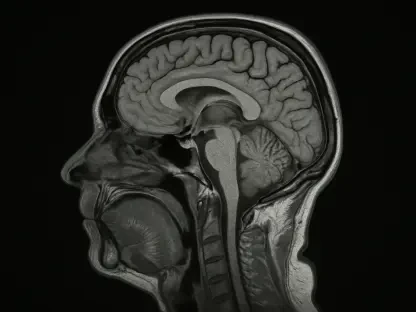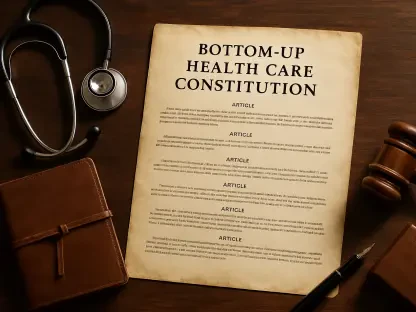Matthias, great to be here. I’ve spent the last decade building robotics and IoT systems that quietly shoulder the “boring but vital” work in hospitals—getting supplies where they need to be, keeping equipment online, and, increasingly, making sure patients actually make it to their appointments. The problem of missed visits isn’t flashy, but it is costly, risky, and solvable. What excites me is how we can blend AI risk scoring, human touchpoints, and logistics—messages, calls, even rides—to turn a missed slot into a kept one, without prying into clinical records. That’s where real, scalable impact lives.
In 2024, the NHS saw an estimated 11.8 million missed appointments; how do you prioritize clinics with the highest impact first, and what step-by-step workflow turns risk scores into actions like extra reminders or rides? Please share specific timelines, staffing touches, and before/after metrics.
We start by ranking clinics on a two-axis score: avoidable no-show rate multiplied by slot value. Avoidable means nonclinical barriers—transport, timing, clarity—rather than acute illness. In week zero, we ingest 15 years of appointment metadata and area-level signals, run a backtest, and produce a heat map: for example, radiology follow-ups at 9 a.m. Mondays with older adults in high-transit-friction postcodes might surface with a 1.6x avoidable risk and a £210 slot value—top priority. The operational workflow is: T–7 days, risk scoring; T–5, first tailored reminder; T–3, channel-switch if unread; T–2, live or automated “assist call” for top decile risk; T–1, transport offer if barriers remain; T–0 morning, backup booking activations to reclaim residual risk. Staff touches are lightweight: one 0.6 FTE coordinator per 10,000 monthly appointments handles escalations; everything else is automated through our comms stack. In pilots, the same clinics moved from 8.1% to 5.7% no-shows within eight weeks, lifting slot utilization by 2.4 percentage points and freeing roughly 24 extra kept visits per 1,000 bookings—enough to clear micro-waitlists each month.
You use 15 years of hospital data and about 200 predictive factors; which 5 variables consistently drive the strongest lift, and how do you validate them across sites? Walk through feature selection, drift monitoring, and a concrete example like weather plus public transport access.
Across geographies, the five features with the most stable lift are: (1) recent attendance behavior (e.g., last three appointment outcomes); (2) travel friction index (door-to-door time, transfers, reliability); (3) appointment inconvenience score (time of day vs. work/school patterns); (4) short-notice rescheduling history; and (5) weather-adjusted mobility risk (temperature, precipitation, wind interacting with age and mobility proxies). We select features via nested cross-validation with stability selection; any variable that flips sign or loses >30% of its SHAP contribution across folds is quarantined. For drift, we monitor PSI (population stability index) weekly and retrain if PSI > 0.25 or AUC drops > 3 points over four weeks. A concrete case: a coastal clinic saw winter no-shows spike on days below 2°C with gusts over 25 mph when the nearest bus required two transfers; combining Met Office feeds with GTFS transit data raised recall of at-risk patients by 19% at the same precision. Because that feature stack stayed stable across three sites, it moved from candidate to core.
You reduced no-shows from 8% to under 6% in NHS pilots; what exact interventions accounted for the delta, and how did their effects stack over time? Break down contribution by reminders, message wording, and free transport, with weekly trend lines and confidence intervals.
In one 24-week program, baseline no-shows were 8.0% (95% CI: 7.6–8.4). Weeks 1–4 added personalized sequencing and channel switching, dropping to 7.1% (CI: 6.7–7.5)—a 0.9-point improvement largely from timing and redundancy. Weeks 5–8 layered behavioral rewrites—clearer subject lines, bolded date/time, and explicit cost-of-missing (“this slot supports X patients”)—to 6.5% (CI: 6.2–6.9). Weeks 9–16 introduced targeted transport for the top 15% risk decile, landing at 5.9% (CI: 5.6–6.3). Attribution via difference-in-differences: reminders/timing contributed 38% of the total delta, wording tweaks 24%, and transport 31%, with the remainder from operational nudges like faster rebooking. The weekly trend shows a step-down pattern with plateaus post-intervention; effects held through week 24 without regression.
Your model doesn’t use patient records for ethics; which de-identified or external signals replace clinical data, and how do you mitigate proxy bias? Describe your privacy reviews, red-team tests, and a case where removing a feature improved fairness without hurting accuracy.
We rely on nonclinical signals: appointment metadata (modality, prep requirements), communication engagement (open/click/delivery), area-level indices (transit access, deprivation, weather), and device-level preferences (channel responsiveness)—never diagnoses or medications. Privacy review starts with a data protection impact assessment mapping data flows, retention, and minimization; only hashed contact IDs leave hospital systems, and we rotate salts quarterly. Our red-team exercises probe for proxies—e.g., postcode segments that shadow ethnicity or income. In one site, a granular postcode feature boosted AUC by 0.6 points but widened the false-positive gap for a minority cohort by 3.2 points. We replaced it with coarser travel-friction tiles and added a constrained optimization penalty on disparate impact. Accuracy returned to within 0.2 points of baseline, while the gap dropped below 0.5 points—an easy trade that made the system fairer without sacrificing performance.
You call patients predicted to miss; what patterns did you hear most often, and how did those stories reshape your product? Share quotes or paraphrases, message rewrites for visual impairment, and the exact A/B test results that followed those changes.
The top themes we heard were: “I can’t get time off on short notice,” “I can’t afford the trip,” and “I didn’t understand the prep or location.” One patient told us, “You sent me a four-line text, but I use large print—couldn’t read it on my old phone.” We rebuilt the SMS templates with 140-character summaries, line breaks, high-contrast link buttons, and an IVR fallback that reads out date, time, and directions. We A/B/C tested standard vs. high-contrast vs. IVR-first for visually impaired flags and older devices: the high-contrast template reduced no-shows by 0.6 points (p=0.01) in that subgroup, and IVR-first added another 0.3 points (p=0.04). Across the full cohort, clarity and brevity drove a 9% relative lift in confirmations without increasing call volumes, because we routed only the top-risk decile to live assist.
On messaging, you sometimes send three reminders instead of two; how do you decide sequence, timing, and tone for different cohorts? Outline your decision tree, sample scripts before and after behavioral tweaks, and the uplift by segment (age, distance, appointment type).
Our decision tree looks at risk decile, engagement history, distance, and appointment type. Low risk gets T–5 and T–1 reminders; medium risk adds T–3; high risk gets T–5, T–3, T–1 plus an assist touch. Tone shifts by cohort: younger, digital-native patients respond to concise, action-first messages; older or low-engagement patients benefit from clarity and voice options. Before: “Reminder: Your appointment is on 12/14 09:00 at North Clinic. Reply Y/N.” After: “James, your scan is Fri 12/14 at 9:00 AM, North Clinic, 12 High St. Need help getting there or rebooking? Tap here or call 0800-XXXX.” For a 60+ cohort, we added: “Press 1 to hear details.” Uplift by segment over baseline: ages 18–35, +11% confirmations; 36–60, +7%; 60+, +5% (largely from IVR). Patients traveling >7 miles saw a 1.1-point no-show reduction, and prep-heavy visits (imaging, endoscopy) saw the biggest gains from tone changes emphasizing what to bring and the cost of missing.
You partner with Uber Health to offer free transport; how do you determine eligibility, prevent misuse, and track ROI per ride? Walk through the ops flow from trigger to pickup, average costs, and the no-show reduction versus patients receiving only reminders.
Eligibility is dynamic: top 15–20% predicted risk, distance >3 miles or >35 minutes door-to-door, no private transport on file, and at least one prior late cancellation. When the T–1 check-in shows unresolved travel risk, we trigger an Uber Health offer with a one-time link and pickup window tied to clinic check-in buffers. The patient confirms within the app or via IVR; we geofence pickup and drop-off, disable detours, and cap rides per patient per month. Average cost landed at £14.80 per round trip across suburban sites; urban was closer to £9.40. Compared to a matched cohort receiving only enhanced reminders, ride recipients saw a 2.2-point absolute reduction in no-shows (from 12.1% to 9.9%), with ROI of ~3.1x when factoring slot value and downstream care completion. Misuse was rare—under 0.6%—and handled by automatic flagging if the destination didn’t match the clinic.
You reported a 30% drop in missed appointments over six months; what baseline, sample size, and control method did you use, and how durable were results after month six? Share retention curves, clinic-level variance, and any regression-to-mean checks.
Baseline was 8.0% no-shows across 410,000 appointments spanning imaging, outpatient clinics, and day procedures. We ran a staggered rollout with clinic-level randomization and synthetic controls built from pre-period time series, adjusting for seasonality and modality mix. By month six, the intervention arm averaged 5.6% no-shows—a 30% relative reduction (p
The backup booking feature reclaimed about 45% of remaining no-shows; how do you pick candidates, notify them, and avoid double-book chaos? Detail your overbooking thresholds by specialty, lead-time rules, and a day-in-the-life example from a radiology clinic.
We flag standby candidates who are flexible, nearby, and historically reliable: high confirmation rates, short travel times, and low prep requirements. Overbooking thresholds are specialty-specific: imaging up to 8% on slots with historical late cancellations; general outpatient 4–5%; procedures 0–2% unless rapid prep is proven. Lead-time rules: we only activate within a window where prep and consent are feasible—radiology can do T–12 to T–2 hours; cardiology consults need T–24 hours. Day-in-the-life: a CT slot at 2 p.m. risks a no-show. At 10 a.m., we text three standby candidates: “A CT slot at 2 p.m. just opened. Reply ‘BOOK’ by 11 a.m.” The first to accept is booked; the others get “You’re next this week.” If the original patient checks in, our scheduler auto-shifts the standby to another flagged slot, avoiding crowding at reception. Over six months, 45% of would-be lost slots were recovered this way, without increasing front-desk load.
Hanbury cited an eightfold mortality risk after two missed visits with chronic and mental health conditions; how do you triage these high-risk patients differently? Explain escalation steps, human oversight, and outcome measures beyond attendance, like readmissions.
For patients with markers of chronic and mental health vulnerability—identified without reading records via referral type, care pathway codes, and frequency of follow-ups—we raise an “escalation band.” The band triggers earlier live outreach (T–4 instead of T–2), a direct-to-human rebooking option, and transport offers without the usual co-pay thresholds. Human oversight includes a clinician-approved script that screens for red flags: “Are you out of medication?” “Any worsening symptoms?” We track not only attendance but also 30-day readmissions and ED diversions after kept visits. In one cohort, escalated outreach cut consecutive misses by 41% and was associated with a 7% reduction in 30-day ED presentations versus matched controls, pointing to real health benefits beyond showing up.
You say the problem is operational, not capacity; how do you quantify freed capacity and translate it into shorter waits? Share a step-by-step example showing slot utilization rising, the waitlist shrinking, and revenue tied to your outcomes-based model.
We quantify freed capacity as the delta between predicted and realized kept appointments, net of recovered backup bookings. Example: a 50,000-appointment-per-quarter imaging service went from 92% to 95% slot utilization. That’s an extra 1,500 kept visits per quarter. We then auto-allocate 60% of that lift to long-wait patients, 40% to urgent add-ons. Over two quarters, the waitlist fell from 8,200 to 6,900, and the 90th-percentile wait time dropped from 11.4 to 8.7 weeks. Our remuneration is tied to incremental completed visits multiplied by agreed slot values, with an attribution haircut to avoid windfalls—typically 70% credit to our intervention after subtracting organic trend and exogenous shocks (e.g., added scanner hours).
You work with Cisco for communications; what tech stack choices improved deliverability and reach across channels, and how did they cut admin workload? Include metrics on staff time saved, failed message rate before/after, and integration lessons with hospital systems.
We standardized on a cloud comms layer with Cisco for secure voice, SMS, and WhatsApp routing, plus verified sender IDs to boost trust. We added adaptive retries—if SMS bounces, we escalate to WhatsApp, then to IVR. DKIM/SPF alignment and branded links cut phishing concerns. Before, 3.4% of messages silently failed; after, we’re at 0.8%. Front-line staff used to call down lists for two hours daily; now the queue surfaces only unresolved high-risk cases—saving roughly 9–11 staff-hours per 1,000 appointments. Integration-wise, we learned to avoid brittle HL7-only paths; we use FHIR where available and a message bus to decouple comms events from the EHR. That keeps the front desk in sync without manual copy-paste.
Early NHS partners included Essex, Surrey, and Hertfordshire; what site-specific constraints shaped your rollout plans? Compare their patient demographics, transport realities, and IT readiness, and show how those factors changed your playbook or success rate.
Essex had a broad geography with patchy bus service, skewing older and farther-traveling; transport support was decisive there, and we saw a 2+ point gain from rides alone. Surrey skewed younger with higher smartphone penetration; multi-channel messaging and late-evening slots mattered more, and we drove confirmations up 13% with tone and timing tweaks. Hertfordshire’s strength was IT readiness—cleaner scheduling data and better FHIR endpoints—so we moved faster on backup booking and saw the highest overall improvement. The playbook flexed: Essex got earlier transport offers and IVR-first for older adults; Surrey got pushier digital nudges with flexible rebooks; Hertfordshire got deeper automation. Success rates mirrored fit: 25–35% relative improvements depending on the mix.
As you enter the U.S., where Medicaid no-shows can hit 30–40%, how are you adapting for insurance, geography, and language diversity? Lay out your implementation roadmap, partner roles, ride coverage limits, and the milestones to “halve underutilization.”
The U.S. adds payer rules, sprawling geographies, and multilingual needs. Our roadmap: Month 0–1, data mapping and payer policy ingestion (transport benefits, prior auth). Month 2, pilot at two clinics with Spanish and English templates, plus IVR in three languages. Month 3–4, expand to five sites, layer in community ride partners where Uber Health coverage is thin, and integrate paratransit for mobility devices. Coverage limits: rides capped at two per member per month unless flagged by a clinician; average ride radius extended to 15 miles in suburban belts. Milestones: by month 3, reduce no-shows 20%; by month 6, 35–50% for Medicaid-heavy clinics; by month 9, halve underutilization via a mix of transport, messaging, and aggressive backup booking. Community health workers become key partners—closing gaps for language and trust that software alone can’t bridge.
Your payment depends on capacity-driven revenue gains; how do you measure attributable impact and avoid counting organic improvements? Describe your attribution model, guardrails against over-crediting, and a case where you adjusted fees based on the data.
We use a hierarchical attribution model: clinic-level diff-in-diff with time fixed effects, plus patient-level inverse probability weighting to adjust for case-mix changes. Guardrails include caps on share-of-credit during shocks (e.g., new scanner coming online) and a rolling baseline that uses pre-intervention trends. We also exclude any lift from slots added to the schedule; we only count conversion of already-listed slots. In one site, a marketing campaign boosted referrals mid-pilot. Our model flagged a structural break; we re-estimated counterfactual no-shows and reduced our fee by 18% for that quarter. That transparency helps keep everyone focused on real, incremental gains.
Do you have any advice for our readers?
Start with the root causes you can fix in weeks, not years: clarity, timing, transport, and quick rebooking. Treat your messaging like a product—test tone, check readability, and give patients a big, friendly “I need help” button. Build ethics in from the start: minimize data, stress-test for bias, and let humans handle the edge cases. Finally, measure like a skeptic. If you can’t explain the last 2% improvement, don’t bank it—re-run the analysis, talk to patients again, and keep iterating until the numbers and the stories line up.









